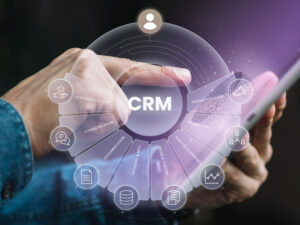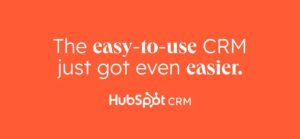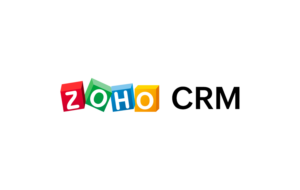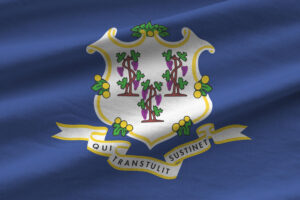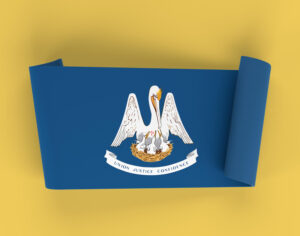Guidelines and Resources for Discovery Phase of Consulting
© Copyright Carter McNamara, MBA, PhD, Authenticity Consulting, LLC.
Sections in this Topic Include:
- Description
- Goals for This Discovery Phase
- Now is a Good Time to Establish a Project Team
- Now Is the Best Time to Choose a Diagnostic Model
- Planning Your Research
- Collecting Your Data
- Analyzing Results of Research
- Generating Recommendations Based on Results of Discovery
- Sharing Findings and Recommendations With Clients
- Also See These Closely Related Topics
Strongly Recommended Pre-Reading
- All About Consulting – Types, Skills and Approaches
- Collaborative Consulting for Performance, Change and Learning
- Guidelines and Resources for Contracting Phase of Consulting
(This phase is sometimes called the diagnostic phase.)
Description
Audiences for This Topic
This phase is useful for internal and external consultants, but also for leaders and managers whose roles include guiding and supporting others to solve complex problems in their organizations.
Different Approaches to This Phase
There can be very different approaches and styles in going through this discovery phase, ranging from a carefully specified and sequential set of activities to an unfolding and nonsequential dialogue with clients. (See the very Different Approaches in Consulting and How Consultants Customize Their Approaches.) For the sake of being highly informative with clear and well organized information in this topic, it will explain a rather orderly, but highly collaborative approach to discovery that is especially useful when working to address recurring, complex issues in organizations.
Typical Activities in This Phase
Whether you are an external or internal consultant, if you are attending to a complex problem or goal, then you and your client will work together during this phase to understand more about the overall priority (problem or goal) of the change effort and how you all can effectively address it. Together, you will collect information, analyze it to identify findings and conclusions, and then make recommendations from that information. Sometimes the data-collection effort is very quick, for example, facilitating a large planning meeting. Other times, the effort is more extensive, for example, evaluating an entire organization and developing a complete plan for change.
Importance — and Ethical Responsibility — to Do This Phase
Sometimes, people minimize the importance of – or altogether skip – this critical discovery phase, and start the project by articulating an ambitious and comprehensive vision for change. However, many would argue that it is unethical to start making ambitious recommendations without fully examining (or discovering) the current situation in the client’s organization. Focusing most of the change efforts on achieving a robust vision, without at least some careful discovery, often can be harmful to your client’s organization because your project can end up dealing with symptoms of any current issues, rather than the root causes. Also, the project could end up pushing an exciting vision that, while initially inspiring and motivating to many, could be completely unrealistic to achieve — especially if the organization already has many current, major issues to address. Therefore, when working to guide change in an organization that already is facing several significant issues, you are usually better off to start from where your client is at now — that means conducting an effective discovery to identify current priorities for change.
Discovery Itself is Powerful Strategy for Change
Your activities for discovery do not have to be tedious and demanding — almost overwhelming. Just the activities of working to understand more about the organization can itself cause a major change in the client’s organization. For example, the activities help your client to become more enlightened about their organization and excited about making any necessary changes. The activities help members to feel that their opinions and concerns are being heard. That feeling is critical to sustaining the type of motivation and momentum required for successful change. Perhaps the most important result from discovery is mobilizing your client for change. As a result, you now have their interest, focus and energy for changing their organization. These features are critical to the success of your project.
Goals for This Discovery Phase
| See a video about finding root causes, targeting the problem, selecting performance standards, focusing research, collecting data, analyzing data and generating useful recommendations. From the Consultants Development Institute. |
The primary purpose of the discovery phase is to fully understand the client’s situation by examining the area of the organization that needs the most attention and what kinds of attention it needs. By collaborating with your client during this phase, you orient your client to accepting feedback about the situation and also the recommendations for how it can be addressed. In their book, Practicing Organization Development : A Guide for Consultants, Rothwell, Sullivan and McLean mention the following benefits of an assessment — the type of activity that is at the core of this discovery phase:
- It identifies the causes of problems in the organization.
- It provides the basis for sharing feedback between you and your client.
- It provides background information for upcoming action planning.
- It provides a basis for tracking and evaluating the project activities.
The goals of this phase are for you and your client to collaboratively:
- Decide what information is needed, starting with the symptoms of the situation.
- Decide how that information can be collected and by whom in a realistic and practical fashion.
- Gather that information, usually by conducting an assessment of some kind.
- Understand the information — often, this is not nearly as difficult as it might seem.
- Identify key priorities that are revealed from the collected information.
- Share mutual impressions of what the information indicates. The mutual impressions are critical to the upcoming action planning phase of consulting.
Additional Perspectives on Discovery Phase
- Problem Defining and Consulting
- Analysis & Diagnosis in Organization Development – pt. 1
- Analysis & Diagnosis in Organization Development – pt. 2
- Analysis & Diagnosis in Organization Development – pt. 3
- Organizational Diagnosis and Development
- Consulting Process – Understanding The Discovery Phase
- Diagnosing Organizations: Methods, Models, and Processes
- Organizational Diagnosis: What You Need to Know and Why Organizations Need
- Problem Solving in Consulting
- Organizational Diagnosis Design
- Organisational Diagnosis
- Diagnosing your team and curing its ills
- Team Leadership: Diagnosing Process Problems
- Diagnosing the Need for Team Building
- Diagnosing Team Problems
Now is a Good Time to Establish a Project Team
One of the most powerful means to cultivate collaboration is by working with a project team comprised of key personnel from the client’s organization. The use of a project team helps to ensure that the client understands the activities in the project, takes strong ownership of them and therefore is much more likely to implement the necessary changes needed in the organization. The “job description” for the team might be to work with you to:
- Answer various questions from you during the project. There will be times when you do not understand various terms and practices within the client’s organization. Team members can explain what is happening, any effects on the project and suggest how the project might be modified.
- Review various drafted results from the consulting process. For example, team members can help develop and review plans for data collection, collect and analyze that data, generate preliminary recommendations and conduct presentations.
- Help customize plans and activities during upcoming phases in the consulting cycle. Team members could give you feedback to ensure that the project’s activities suit the nature and needs of their organization. Team members often know more about the organization’s culture and how to work within that culture than the consultant.
- Monitor progress of the project. Team members should know the project plans and be aware of the status of their implementation. Members can help by suggesting any changes needed to get the plans back on schedule.
- Sustain momentum throughout the planning process. Team members can show enthusiasm and support for the project. Other members of your client’s organization can be inspired if they see their fellow employees really believing in the project.
Now Is the Best Time to Choose a Diagnostic
Model
| See a video about what performance is, including the role of performance standards that often are in diagnostic models. From the Consultants Development Institute. |
What is a Diagnostic Model?
We all have diagnostic models. Some are explicit and known to us. Others are implicit and intuitive. For example, think about how you feel about a certain team or organization that you know about. You probably had some automatic reaction to it, for example, a conclusion or a feeling that it is struggling or high-performing. That reaction came from some explicit or implicit set of standards that you have for how it should be acting or performing. You probably also had some suggestions for what it could do to improve. That is your diagnostic model.
Without an explicit and mutually discussed diagnostic model, you and your client can end up just wondering around in the project according to each of your own unknown biases and standards, often believing that you all are working well together — when you actually are not. Each of you might be seeing the same organization very differently and coming up with very different recommendations.
Benefits of a Diagnostic Model
A very good diagnostic model can be useful to:
- Suggest a set of best practices or a standard of performance in regard to the area in the organization that exhibits the ongoing problem.
- Suggest what data needs to be collected in the organization to compare it to the best practices or the standard.
- Suggest what actions need to be taken to increase the performance in that area of the organization.
- Evaluate the success of the project by comparing the performance of the improved area to the best practices or standard.
The guidelines for choosing which model to use are similar to the guidelines for choosing which strategies (or “interventions”) to use when working to improve an organization. See the section:
How to Choose Which Strategies (Interventions) to Use for Change
There are numerous models available when working to improve an organization. These two models are particularly straightforward to use. The topic Example Application of a Diagnostic Model for a Systems Analysis explains how to use the two models.
- Systems-Based Model to Diagnose For-Profit Organizations
- Systems-Based Model to Diagnose Nonprofit Organizations
A life-cycle model also is quite clear because it can suggest what types of actions are needed to bring the team or organization up to the next level. See:
Basic Overview of Life Cycles in Organizations (often include standards and recommendations)
Here is a more complete list of models to consider:
Various Organizational Change Models
Research Planning
Focus Your Research – Choose Research Questions
Do not be alarmed about the word “research”. It need not be a highly scientific and laborious activity during this phase. The more realistic that you make it, the better. Ideally, the research conducted by you and your client would be useful to everyone in your client’s organization. However, without a clear and specific focus, the research can quickly become a demanding and wide-ranging set of activities that can produce a tremendous amount of seemingly disconnected information – information that can end up being useful to no one.
Therefore, it is extremely important to get as much focus as possible before you and your client start the research. A useful way to focus your research is to identify one overall question that the research must answer, for example:
- How can we stop the recurring cash shortages in the client’s for-profit organization?
That question invites a few more, including:
- So what does an ideal for-profit organization do to ensure strong financial and organizational sustainability? What are the typical best practices? A diagnostic model about high-performing, for-profit organizations will often suggest those best practices. In our example, let’s use this diagnostic tool: Systems-Based Model to Diagnose For-Profit Organizations.
- How is the organization performing those best practices now?
Identify What Data to Collect and How
A good diagnostic model will also suggest what data to collect. In our example of the recurring cash shortages, our chosen diagnostic model looks at the entire system of an organization. When we read about the model, it suggests that recurring problems with cash are often caused by problems with poor financial management. It also suggested that the recurring problems could be caused by poor business planning, which can be caused by unrealistic strategic planning.
So, to be sure that we are focusing on the true cause of the recurring cash shortages — and not just its symptoms, we decide to look at the best practices in each of those three major functions. Here are some overall types of data to collect regarding common functions in an overall organization.
Some Common Types of Data to Collect
Here is a convenient, free organizational assessment tool. We’ll use this in our example of the recurring cash shortages.
For-Profit Organizational Assessment Questionnaire
Data could be collected by using a variety of methods other than — or in addition to — the above assessment tool. See:
Overview of Research Methods
This site explains a bit more about each method:
Basic Research Methods
If you choose to design your own tools, then consider:
Develop a Research Plan
The plan should specify the primary research question to be answered and any associated questions. It should also specify the data that is needed, sources of the data, how it will be collected, when and by whom. It should be a very relevant, realistic and practical plan. Do not worry about your plan being perfect. You will learn more about what is really needed as you implement it. The client should review the drafted plan as well to be sure it is understandable and acceptable to them. See
Planning Your Business Research
Collecting Your Data
Before collecting your data, you will need to have the research announced to the participants. You also will need to prepare them for providing the data. Also, you should be prepared if you encounter any surprises, such as unethical or illegal practices. See: Conducting Research With an Organization
Analyzing Results of Research
In our example of the recurring cash shortages above, we selected a diagnostic tool and an organizational assessment tool. The diagnostic tool suggested that we look especially at the best practices in financial management, business planning and strategic planning. Our organizational assessment tool evaluated the quality of the best practices in each of those three functions. So in our analysis of the data from the assessment, we need to analyze how well the organization is doing in those three functions. Our key question is:
- What are any differences between how the client’s organization is doing financial management, business planning and strategic planning now, as compared to the best practices suggested by the assessment tool? Any differences that we find are the types of issues that our consulting needs to address.
For help in organizing and analyzing your data, see:
Analyzing, Interpreting and Reporting Results
So what types of issues might we be finding in those three management functions?
See:
- Potential Types of Issues That Might Be Found in For-Profit Organizations
- Potential Types of Issues That Might Be Found in Nonprofit Organizations
These sites might also be useful to deepen and enrich your analysis:
- Systems Thinking (see recognize overall patterns, cycles, themes in the data)
- Critical Thinking (for more robust analysis of data)
- Problem Solving (for means to make conclusions, etc., from data)
- Maximum Performance — Different Things to Different People
Generating Recommendations Based on Results of Discovery
Traits of Useful Recommendations
Recommendations should be focused on the client’s priority (problem or goal), match the culture of the client’s organization, be doable within their current or near-term resources, and focused on the what needs to be done and not on the how that it needs to be done. (The how will be determined during the upcoming action planning phase). They should also be prioritized for implementation.
The recommendations need not address all of the issues that were found. Because your client’s organization is a system with many integrated parts, you and your client can often make a significant difference with recommendations that affect only a few of those parts. Then, as those parts become healthier, they positively affect the rest of the organization.
In our example of the recurring shortages of cash, our analysis might have found that the functions of financial management, business planning and strategic planning all need to have certain best practices implemented within each of them. The diagnostic tool also suggested that the improvements be made in the general order of strategic planning, then business planning and then financial management practices. Of course, improvements might be made to all of them together, depending on the expertise of the consultant and resources of the client’s organization. It might be useful to also see:
- Common Recommendations to Improve For-Profits and Their Order of Implementation
- Common Recommendations to Improve Nonprofits and Their Order of Implementation
Sharing Findings and Recommendations With
Clients
| See a video about roles and goals of a facilitator, structures of groups, managing meetings, when and how to intervene, maximizing participation, group decision making and group conflict. From the Consultants Development Institute. |
The Feedback Meeting
Now that you and your client have generated findings and identified recommendations based on the findings, both of you are now ready to share that information with the rest of the members of the organization in what is often referred to as a feedback meeting. The manner in which you share that feedback can greatly influence how others in the organization will accept and implement the recommendations.
If you have been working in a highly collaborative fashion with your client, now is the time that collaboration will really pay off. There will be few surprises when hearing the results of the discovery activities. The sharing of the recommendations is often done in what is called a feedback meeting. The primary outcome of the meeting should be that leaders in the organization select which of the recommendations to implement.
Common Mistakes to Avoid
A common mistake is to allocate far too much time to discussion about the problem, the research and its findings. People assume that the more the participants know about the problem, including all of the dynamics of its causes and effects, the more likely they will be to successfully solve it. That assumption is not valid because problems rarely have simple, rational causes that can be fully understood. Delving into the background of the problem usually results in participants feeling deep despair and anxiety. Besides, most members of the organization usually are already aware that the problem exists – they want to move
forward to solve it as soon as possible.
Suggested Agenda for the Meeting
Here is a reasonable agenda for that meeting.
- Welcome and brief introductions (10 minutes)
- Review the agenda, goals of the meeting and its ground rules (3)
- Describe the project, including your role and the role of the research (2)
- Describe the focus of the research and its research methods (3)
- Explain that issues are from broken systems, not from broken people (2)
- Describe the overall findings discovered from the research (20)
- Describe the overall recommendations from you and your client (30)
- Decide which recommendations to follow (30)
- Specify next steps (10)
- Evaluate the meeting (10)
Total Time 120
The next phase of consulting, Action Planning Phase of Consulting, will be about developing specific action plans to implement each of the recommendations that were approved during the feedback meeting.
Some Useful Resources for Sharing Feedback and Recommendations
| Reminder: See a video about the discovery phase, including finding real causes, performance standards, focusing research, collecting and analyzing data, sharing recommendations, and getting agreement. From the Consultants Development Institute. |
- Meeting Management (if recommendations shared in a meeting)
- Group Facilitation
- Presenting
- Sharing Feedback
- Managing Group Conflict
- Handling Difficult People
- Negotiating
Also See These Closely Related Topics
- Guidelines and Resources for Action Planning Phase of Consulting
- Guidelines and Resources for Implementation Phase of Consulting
- Guidelines and Resources for Project Evaluation Phase of Consulting
- Guidelines and Resources for Termination Phase of Consulting
- Overview of the Field of Organization Development
- Guidelines, Methods and Resources for Organizational Change Agents
- Competencies and Resources for Organizational Change Agents
Additional Library Resources in the Category of Organizational
Change and Development
 Sections of this topic
Sections of this topic





